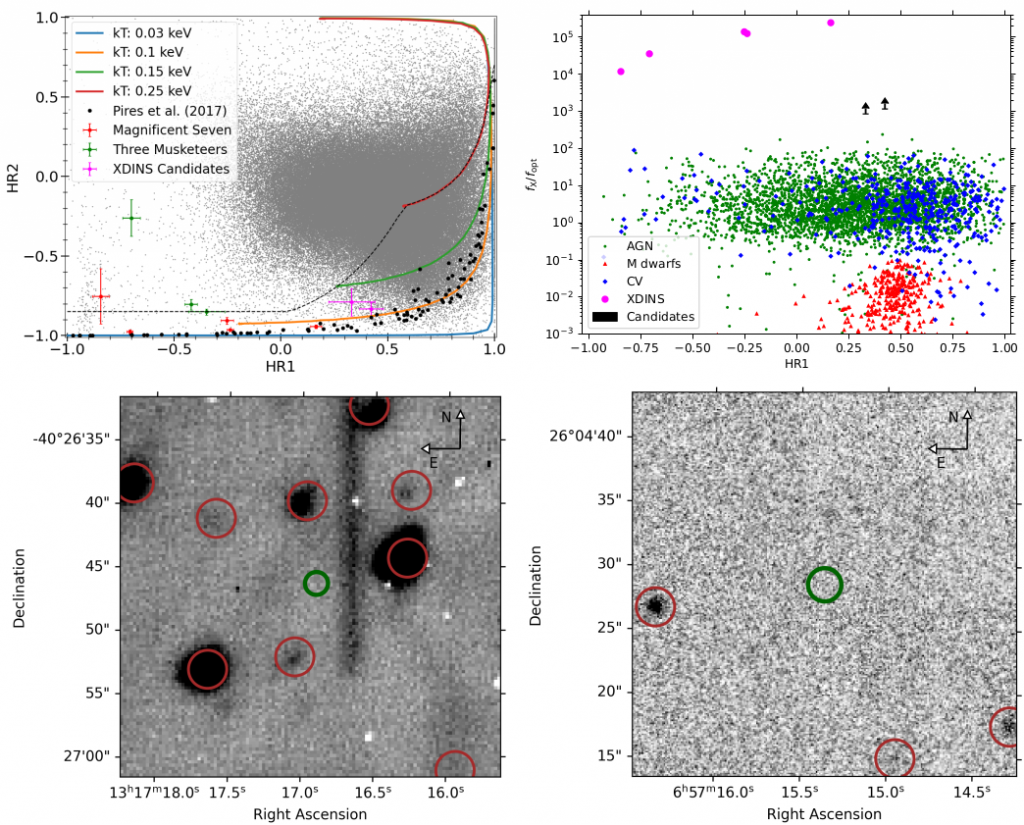Since the discovery of the first radio pulsar fifty years ago, the population of isolated neutron stars (INSs) in our Galaxy has grown to 2800, out of which a few percent are exclusively seen in X-rays. Despite their scarcity, the X-ray emitting INSs are the key to understanding aspects of neutron star phenomenology and evolution not observed in normal pulsars. The eROSITA all-sky survey will unveil the X-ray faint end of the population of INSs, as it provides a significantly deeper view of the sky than its predecessor ROSAT.
In the first funding period of eRO-STEP (2021-2024), we have identified the first X-ray emitting INSs and set up a comprehensive follow-up program at X-ray and optical wavelengths (including an XMM-Newton Large Programme). In the second funding period (2024-2027), we are putting a focus on completing the sample and analyzing the population. With eRASS, we will study the X-ray faint end of the population and will be able to constrain evolutionary models and advance the understanding of the NS population as a whole.

Overview over two INS candidates discovered in the eROSITA all-sky survey (Kurpas et al. 2023); The top panels show the position of the candidates (magenta) in X-ray and optical colors, whereas the bottom panels show optical images at the positions of the X-ray sources.






